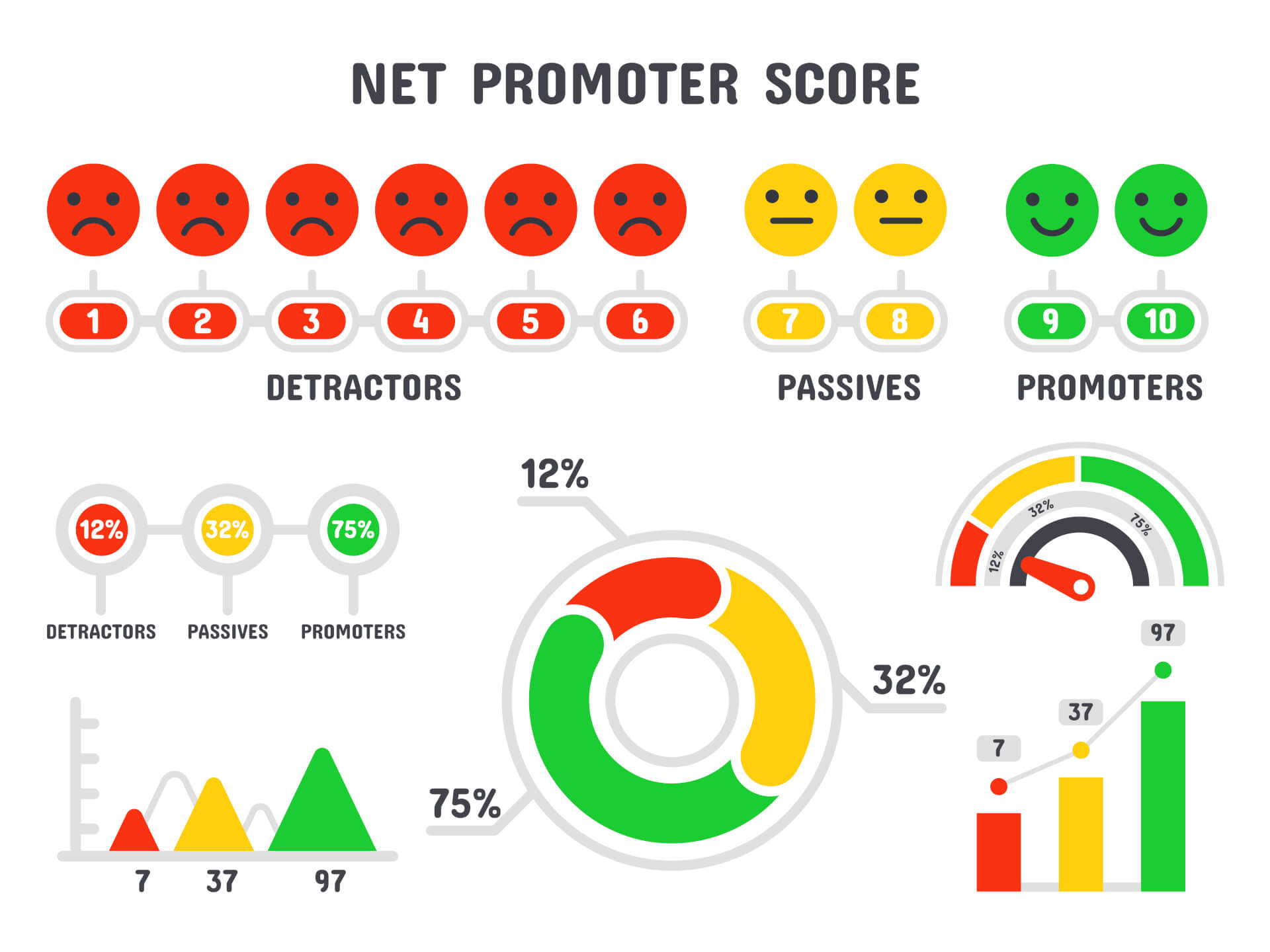In today's highly competitive business landscape, understanding customer behavior is paramount to success. One effective method for predicting and analyzing customer behavior is through Net Promoter Score (NPS).
 NPS is a metric widely used by businesses to gauge customer loyalty and satisfaction. In this comprehensive guide, we'll delve into how to leverage NPS to predict customer behavior effectively.
NPS is a metric widely used by businesses to gauge customer loyalty and satisfaction. In this comprehensive guide, we'll delve into how to leverage NPS to predict customer behavior effectively.
Table of Contents
The NPS Formula

NPS is calculated by subtracting the percentage of Detractors from the percentage of Promoters. The Passives are excluded from the calculation.
NPS=%Promoters−%DetractorsNPS = \%Promoters - \%DetractorsNPS=%Promoters−%Detractors
Types of NPS Surveys
- Transactional NPS
Transactional NPS surveys are conducted immediately following a specific interaction or transaction with the company. They provide insights into customer satisfaction based on recent experiences. - Relationship NPS
Relationship NPS surveys measure overall customer loyalty and satisfaction over a longer period. They provide a holistic view of the customer relationship.
Signs of High NPS

- Repeat Purchases
Customers with a high NPS are more likely to make repeat purchases and become loyal advocates for the brand. - Positive Word-of-Mouth
Promoters tend to actively recommend the company to friends, family, and colleagues, contributing to positive word-of-mouth marketing.
Factors Influencing NPS

- Customer Experience
A positive customer experience is a key driver of high NPS scores. Factors such as product quality, ease of use, and customer service can significantly impact NPS. - Brand Perception
Customers' perception of the brand's reputation, values, and mission can influence their likelihood to recommend it to others.
Conducting NPS Surveys
- Survey Design
Crafting a well-designed NPS survey is essential for obtaining accurate and actionable feedback from customers. - Timing
The timing of NPS surveys is crucial. Surveys should be conducted at strategic touchpoints along the customer journey.
Improving NPS Scores

- Addressing Customer Feedback
Acting on feedback received through NPS surveys is critical for improving scores. Companies should prioritize addressing the issues raised by Detractors and capitalizing on the strengths highlighted by Promoters. - Continuous Monitoring
Regularly monitoring NPS scores allows companies to track changes over time and identify areas for improvement.
Proactive NPS Management
- Proactive Customer Engagement
Engaging with customers proactively can help prevent issues before they escalate, leading to higher NPS scores and increased customer loyalty. - Employee Training
Investing in employee training to deliver exceptional customer service can positively impact NPS scores.
Real-Life Impact of NPS

- Case Study: Wellness Centre
A Wellness Centre implemented an NPS program and saw a significant improvement in customer satisfaction and retention rates. By addressing customer feedback, they were able to enhance their services, leading to increased loyalty and advocacy. - Expert Insights
"Net Promoter Score is a powerful tool for businesses to gauge customer loyalty and identify areas for improvement. By focusing on building positive customer experiences, companies can drive long-term growth and success." - Mr. Markus Kölmel, Customer Experience Specialist
Conclusion
In conclusion, Net Promoter Score (NPS) is a valuable metric for predicting and analyzing customer behavior. By understanding the different types of NPS surveys, recognizing signs of high and low NPS, and implementing strategies to improve scores, businesses can enhance customer satisfaction, loyalty, and advocacy.
 Recommended reading: If this article helped you and you would like to learn more about the possibilities of using NPS in customer acquisition, continue reading here: "The role of NPS in customer acquisition"
Recommended reading: If this article helped you and you would like to learn more about the possibilities of using NPS in customer acquisition, continue reading here: "The role of NPS in customer acquisition"